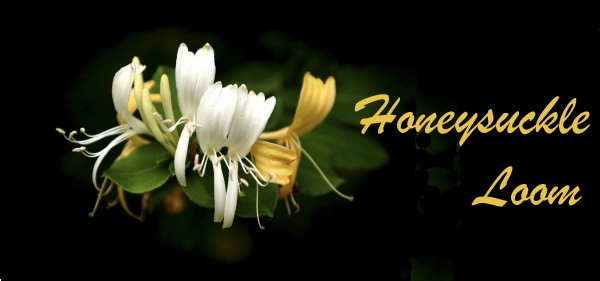What did I learn?
- The curling selvedges do come out with a hard press.
- When your feet are trained to treadle four shafts in a row, switching to five shafts takes some re-training (and un-weaving).
- Much harder to see treadling errors in satin than in twill.
- Using a mirror to watch the warp side helps catch errors.
- Got a nicer drape and fabric feel with 8/2 tencel warp, combined with 10/2 tencel than with 8/2 tencel as both the warp and weft -- but both are really nice.
- The take-up and shrinkage of tencel -- not much.
 Both have the same 8/2 tencel warp. The mobius on the left has an 10/2 tencel weft with tencel in pinks and reds from Just Our Yarn. The one on the left has an 8/2 tencel weft in reds, pinks and black. The undertones in the left mobius warp are more muted and pinky while the other one leans more toward reds and orange. Both seem to be inspired by the sunset photo below, however, the blacks and grays stand out more in the one with the red/black weft. I had hoped the pink weft would have a stronger pink cast on the warp.
Both have the same 8/2 tencel warp. The mobius on the left has an 10/2 tencel weft with tencel in pinks and reds from Just Our Yarn. The one on the left has an 8/2 tencel weft in reds, pinks and black. The undertones in the left mobius warp are more muted and pinky while the other one leans more toward reds and orange. Both seem to be inspired by the sunset photo below, however, the blacks and grays stand out more in the one with the red/black weft. I had hoped the pink weft would have a stronger pink cast on the warp.I still have to twist the ends together to create each mobius. The red/black weft one is 39" so I may sew it together with a flat fell seam. The pink weft one is 36" -- exactly the length I like, so I will twist it together with the fringe. Both are 6 5/8" wide -- I little wider than I usually like.
Right now my next satin experiment will be with a 7-shaft satin. I'm going to use JOY 10/2 tencel in blues and greens as the warp and maybe some Red Fish 20/2 silk in the weft. And the width will be less. But right now I'm going to hang out in the yard with Daisey the Dog so she can bark at the sunshine -- something we haven't seen much of lately in the Pacific Northwest.












